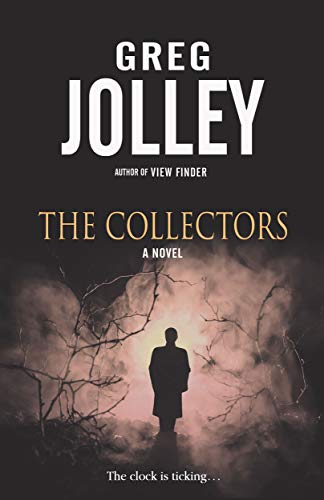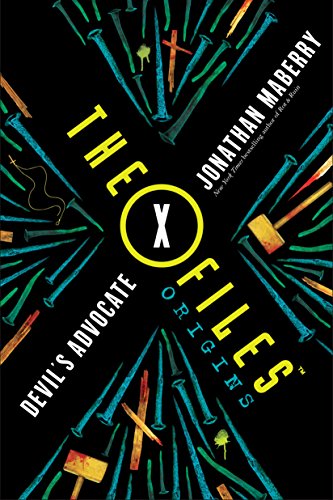1950s COMIC BOOKS – CONSPIRACY OR SCARE? by Will Zeilinger
October 3, 2018 by Janet Elizabeth Lynn and Will Zeilinger in category Partners in Crime by Janet Elizabeth Lynn & Will Zeilinger tagged as 1950s, comics, Congress, Partners in Crime
1950s COMIC BOOKS – CONSPIRACY OR SCARE?
Many of us in the “Baby Boom” generation remember collecting soda pop bottles and turning them in for a few cents each or saving our allowance to buy one of our favorite comic books for a dime. In the 1950s it could be anything from Archie, Superman and Lois Lane, or Blackhawk, to Tales from the Crypt or G.I. Joe. We would sneak off somewhere and devour the latest adventures of our choice.
The truth is we had our noses in comic books like young people of today have their eyes and thumbs glued to their electronic devices.

According to historian Michael A. Amundson, there was an altruistic rationale for some comic books. Familiar comic book characters helped ease young readers’ fear of nuclear war and neutralize anxiety about the questions posed by atomic power. For example, characters from the Blondie comic strip were used in the Educational Comic (EC) book Dagwood Splits the Atom. It was also during this period that long-running humor comics debuted, including EC’s Mad comics and Carl Barks’ Uncle Scrooge in Dell’s Four Color Comics (both in 1952).
Little did we know something more sinister was brewing to which most of us were totally oblivious.

Congress Gets Involved
In 1953, the comic book industry hit a major setback when the United States Senate Subcommittee on Juvenile Delinquency was created in order to investigate the problem of juvenile delinquency. This was a publicity thing to satisfy the passions of the do-gooders.
Estes Kefauver, who had run for the Presidency in 1952, and held hearings on organized crime a few years before, extended the reach of his committee and met in New York City to investigate comic books. They had several people testify.
This was followed by the publication of Fredric Wertham’s Seduction of the Innocent the following year (that claimed comics sparked illegal behavior among minors) comic book publishers were subpoenaed to testify in public hearings. As a result, the Comics Code Authority was created by the Association of Comics Magazine Publishers to enact self-censorship by comic book publishers.
Seal of Approval
 The word quickly spread about what the new standards would be. In fact, this served the interests of concerned parent groups, who were active locally. That would be where the real action happened—not from the top, but from the pressure of people on the stores, on the distributors, from churches and PTAs and others. For example, kids were encouraged to trade in (“swap”) “bad” comics for “good comics.”
The word quickly spread about what the new standards would be. In fact, this served the interests of concerned parent groups, who were active locally. That would be where the real action happened—not from the top, but from the pressure of people on the stores, on the distributors, from churches and PTAs and others. For example, kids were encouraged to trade in (“swap”) “bad” comics for “good comics.”
Other communities collected comics and burned them! Trashed them! Some kids tried to protest, saying this was like the Nazi book burnings, but folks didn’t believe them. The main result, though, was the production of a new “Comics Code.”
For most kids of that era, comic books would still be bought, traded and read. The political winds of Washington would have little effect on them.
0 0 Read moreAffiliate Links
A Slice of Orange is an affiliate with some of the booksellers listed on this website, including Barnes & Nobel, Books A Million, iBooks, Kobo, and Smashwords. This means A Slice of Orange may earn a small advertising fee from sales made through the links used on this website. There are reminders of these affiliate links on the pages for individual books.
Search A Slice of Orange
Find a Column
Archives
Featured Books
MISTLETOE & MAYHEM: A REGENCY HOLIDAY ROMANCE ANTHOLOGY
There’s no Christmas like a Regency Christmas spent under mistletoe! New York Times Bestselling author Cheryl Bolen and friends invite you to discover true love in eleven deliciously steamy romances in this all-new holiday collection.
More info →THE WOULD BE MOMMY
Babies, babies, everywhere! But can she keep hers?
More info →A COWBOY TO REMEMBER
Can Jake convince Olivia to risk it all one more time . . .
More info →Newsletter
Contributing Authors
Search A Slice of Orange
Find a Column
Archives
Authors in the Bookstore
- A. E. Decker
- A. J. Scudiere
- A.J. Sidransky
- Abby Collette
- Alanna Lucus
- Albert Marrin
- Alice Duncan
- Alina K. Field
- Alison Green Myers
- Andi Lawrencovna
- Andrew C Raiford
- Angela Pryce
- Aviva Vaughn
- Barbara Ankrum
- Bethlehem Writers Group, LLC
- Carol L. Wright
- Celeste Barclay
- Christina Alexandra
- Christopher D. Ochs
- Claire Davon
- Claire Naden
- Courtnee Turner Hoyle
- Courtney Annicchiarico
- D. Lieber
- Daniel V. Meier Jr.
- Debra Dixon
- Debra H. Goldstein
- Debra Holland
- Dee Ann Palmer
- Denise M. Colby
- Diane Benefiel
- Diane Sismour
- Dianna Sinovic
- DT Krippene
- E.B. Dawson
- Emilie Dallaire
- Emily Brightwell
- Emily PW Murphy
- Fae Rowen
- Faith L. Justice
- Frances Amati
- Geralyn Corcillo
- Glynnis Campbell
- Greg Jolley
- H. O. Charles
- Jaclyn Roché
- Jacqueline Diamond
- Janet Lynn and Will Zeilinger
- Jaya Mehta
- Jeff Baird
- Jenna Barwin
- Jenne Kern
- Jennifer D. Bokal
- Jennifer Lyon
- Jerome W. McFadden
- Jill Piscitello
- Jina Bacarr
- Jo A. Hiestand
- Jodi Bogert
- Jolina Petersheim
- Jonathan Maberry
- Joy Allyson
- Judy Duarte
- Justin Murphy
- Justine Davis
- Kat Martin
- Kidd Wadsworth
- Kitty Bucholtz
- Kristy Tate
- Larry Deibert
- Larry Hamilton
- Laura Drake
- Laurie Stevens
- Leslie Knowles
- Li-Ying Lundquist
- Linda Carroll-Bradd
- Linda Lappin
- Linda McLaughlin
- Linda O. Johnston
- Lisa Preston
- Lolo Paige
- Loran Holt
- Lynette M. Burrows
- Lyssa Kay Adams
- Madeline Ash
- Margarita Engle
- Marguerite Quantaine
- Marianne H. Donley
- Mary Castillo
- Maureen Klovers
- Megan Haskell
- Melanie Waterbury
- Melisa Rivero
- Melissa Chambers
- Melodie Winawer
- Meriam Wilhelm
- Mikel J. Wilson
- Mindy Neff
- Monica McCabe
- Nancy Brashear
- Neetu Malik
- Nikki Prince
- Once Upon Anthologies
- Paula Gail Benson
- Penny Reid
- Peter Barbour
- Priscilla Oliveras
- R. H. Kohno
- Rachel Hailey
- Ralph Hieb
- Ramcy Diek
- Ransom Stephens
- Rebecca Forster
- Renae Wrich
- Roxy Matthews
- Ryder Hunte Clancy
- Sally Paradysz
- Sheila Colón-Bagley
- Simone de Muñoz
- Sophie Barnes
- Susan Kaye Quinn
- Susan Lynn Meyer
- Susan Squires
- T. D. Fox
- Tara C. Allred
- Tara Lain
- Tari Lynn Jewett
- Terri Osburn
- Tracy Reed
- Vera Jane Cook
- Vicki Crum
- Writing Something Romantic
Affiliate Links
A Slice of Orange is an affiliate with some of the booksellers listed on this website, including Barnes & Nobel, Books A Million, iBooks, Kobo, and Smashwords. This means A Slice of Orange may earn a small advertising fee from sales made through the links used on this website. There are reminders of these affiliate links on the pages for individual books.










































